BEST THING IS WHAT A PERSON CAN DO HIM SELF
I personally believe that best thing is what a person can do himself, with his own hands, using his mind and skills. I have successfully installed 4000Watt solar panels at home after having spent hours and days on my roof trying to wire solar panels, working with welder in designing a solar mounts, running back and forth from market while trying to purchase the hardware, running back and forth with an amp-meter trying to figure out losses in wiring, reading online books, searching for best available controllers in a given price and thinking of ways as how to harvest electricity and use it in a best way so that I don?t starve my output line. During this process, I have learn't a lot and would like to share my knowledge and experience with you.

FIRST AND FOR MOST IMPORTANT LESSON:
- Solar charge controllers, may it be off-grid or on-grid is a back bone to your entire installation. People usually tend to argue over the panels efficiency whereas ignore the role of controllers and wiring in the entire system. It is very important that wiring thickness and its distance from Controller should be properly calculated and distance between the solar panels and the controllers be minimized as much as possible.
- The second most important aspect is the angle and the orientation of your solar panels with respect to sun. Pakistan is located in norther hemisphere so solar panels must be installed pointing towards south and optimum summers and winters angle be calculated using online tools. Basic rule is that knowing your latitude, 15 degrees be subtracted from your latitude which gives you a summer angle and 15 degrees be added into your latitude to give you a winter angles.
- Number of cheap solar controllers are usually available in market that tremendously contribute in killing your battery bank prematurely. If you will read my original thread on “Maintaining UPS/Car batteries” then it highlights as how important this is to provide your battery with correct charging current and cut of Voltages be properly adjusted. all these issues are linked with PWM controller as issue with be discussed
Solar panels are usually rated at 17% efficient, I hereby intend to show you that 17% of the harvest is a very good harvest provided you don’t lose your energy further in terms wiring's, solar controller selection and installing your panels at a wrong angle.
PEOPLE ACTUALLY DO NOT UNDERSTAND THE TERM “SOLAR PANELS EFFICIENCY”
Efficiency of solar panels is an important spec as provided by the manufacturer but it’s not so important that one does not consider other flaws in his installation or least review as maybe something is not been done rightly. Let’s start our discussion by trying to understand the term efficiency of solar panels.
Amount of solar radiation or radiance falling on any square meters of earth surface varies from 0 Watt per square meter to maximum 1000 Watt per meter square meters depending upon time of the day, season and your local climatic conditions. I would request each of you to go and measure the area of your roof top in terms of square-meters and compare it with the area of 250Watt mono type solar panel (with average area of 1.46 meter-square and with average cost of Rs.10000/- each) as how many of these you can install on your roof top easily because that gives you an idea of as how many watts of radiation which falls on your roof top daily and what percentage of this can be harvested.
Maximum output of solar panels are measured by exposing the unit under the maximum sunlight it can possibly get which is rated at 1000watt/meter-square. This implies that a panel rated at 250Watt will give you a Maximum output of 250Watts if it receives 1000 watt/meter-square of sunlight and to make it simpler for you, area of 250 Watt panel is 1.46 meters-square, this area should receive a maximum solar radiations of 1000Wat/meter-square* 1.46 meter-square=1460 Watts and if you divide 250/1460 which turns out to be 17.1%, a data which is also quoted behind every panel by the manufacturer. These are the same watts (Units of Power) needed to power your bulb, run fans and air conditioners.
Now question comes as how much of the actual sunlight are we getting, kindly take a look at these two weather stations located in West ridge and DHA2 as weather station dumps all its data online 24/7 into weather underground and also provides one with solar radiation data.
https://www.wunderground.com/personal-weather-station/dashboard?ID=IPUNJABR2#historyhttps://www.wunderground.com/personal-weather-station/dashboard?ID=IISLAMAB4#history

In-order to install the solar panels, one has to consider the optimum all year angle of your panels and which for my location comes out to be 30 degrees pointing towards south whereas summer angle comes out to be 18 degree and winters angle to be 48 degrees. Kindly consult online solar angle calculator.
The above solar radiation sensor on weather station lies on a flat plane and gave a maximum yield of 707.1watt/square-meters on 1[SUP]st[/SUP]-August-16 which means that actual radiations measured would be more on solar panels as the angle has been aligned with the optimum calculated angle of solar panels.
YouTube Video shows effect of tilt angle on solar panels
https://www.youtube.com/watch?v=m_YuPfShbCo
Considering 707watt/square-meters as a starting point, let’s see what my harvest would be. I have installed 16 solar panels of 250 watt on my roof top with rated efficiency of 17% mono type and area of each panel as 1.46 Square meters. Keeping the peak reading in mind, I should be getting least 707Watt/square meters * 1.46 square-meters (Area of my single panel) * 16(Total Number of panels installed) * .17 (Efficiency of my solar panels which is normally rated at 250 Watt once solar radiation are at its maximum 1000Wat/meter-square) * 0.97(Losses in wiring, refer to solar wiring calculator to determine total thickness of your wires needed to restrict the losses at maximum 3%) * 0.94 ( Efficiency of your Maximum Power Point tracking device which is a charge controller) = 2560 Watts. The value 2560 watt is a very good harvest and if you are not getting least this then you need to reconsider your installation as you must be making a mistake somewhere.
WHY IS WIRING AND SOLAR CONTROLLER SELECTION VERY IMPORTANT
1. We know Power=Voltage * Current or P=VI, In any given system design we can play with either V or I such that power remains same but once it comes to transporting electricity then if V is higher than line losses will be less as compared to if we increase I. Kindly consult the solar wire sizing calculator to see the wiring thickness based on your system Voltage and distance of panels from your solar controller.
2. Batteries needs certain Voltage on its battery terminal to properly charge itself. If controller is unable to alter this Voltage as being provided by the panels then it will ruin the batteries very quickly. PWM controller is essentially a switch which provides whatever the Voltage is on your Panels without altering it so we need a smart controller here. In-order to fully understand the issue, a 24 Volts battery bank needs 30-32Volts Vmp to fully charge itself. A panel rated at Vmp=30Volts will actually give you a Vmp voltage between 24-28 Volts maximum because Vmp Voltage of your solar panels fluctuates with change in temperature. Your only option in this scenario with your pwm charge controller is to buy 2*150 Watts solar panels rated at Vmp:18 Volts and wire two of them in series such that your quoted Vmp Voltage becomes 36 Volts. In reality, that will end up giving you a Vmp Voltage between 29-32 Volts as needed by the batteries to fully charge themselves. So you can see, we have complicated the things with our original PWM solar charge controllers.
3. Once solar panels are wired in parallel configuration then it takes time for that panel voltage to reach the operating range of controller and they will only come to life once full sun light has appeared on horizon. Operating range of your controller is dictated by the least Voltage level needed by the batteries to charge itself and may range from 25Volts to 30Volts for 24Volts battery bank. We need a Vmp Voltage between 30-32 Volts to properly charge our system.
These issues can very well be taken care of if somehow we can wire few panels in series to increase the input Voltage of your panels and make it a 60 Volts, 90 Volts, 120 Volts or for matter of fact 150 Volts system and then we need a smart controller which can step down this Voltage to desired 30-32 Volts Vmp as required on battery terminals. I hereby introduce you to Maximum Power Point Tracking (MPPT) charge controllers which we will discuss down the line and which will solve all your issues.
HOW AM I GOING TAKE ADVANTAGE OF SOLAR SYSTEM ONCE IT’S ONLY AVAILABLE FOR FEW HOURS
Solar panels are dumb devices, which provides energy once sun is available only. Every new installer wants to think of ways as how to harvest energy from solar panels once it’s only available for few hours. Thoughts such as that I am going to starve my output line comes under the mind of every person, once there is sun, I am good but under cloudy day, I am going to blow my Air Conditioner, Tv’s and attached electronics. I may need a very big backup but that will increase my cost many folds and I don’t have funds to do all that.
Engineers and governments have identified this as an issue and have provided ways to make it a viable option for every home. Solar Hybrid charge controllers are now flooded in market which measures your total load, checks the total energy being produced by Solar Panels, adds the energy from your utility line into that of your solar panels and powers the output load while also charges your battery bank such that it becomes your normal UPS being supplement by the energy from your solar panels. The above solar controller is characterized as off-grid solar hybrid inverter. These controllers will take the best scenarios out from your solar, battery bank and utility line to provide you with uninterrupted power supply and has user’s adjustable functions.
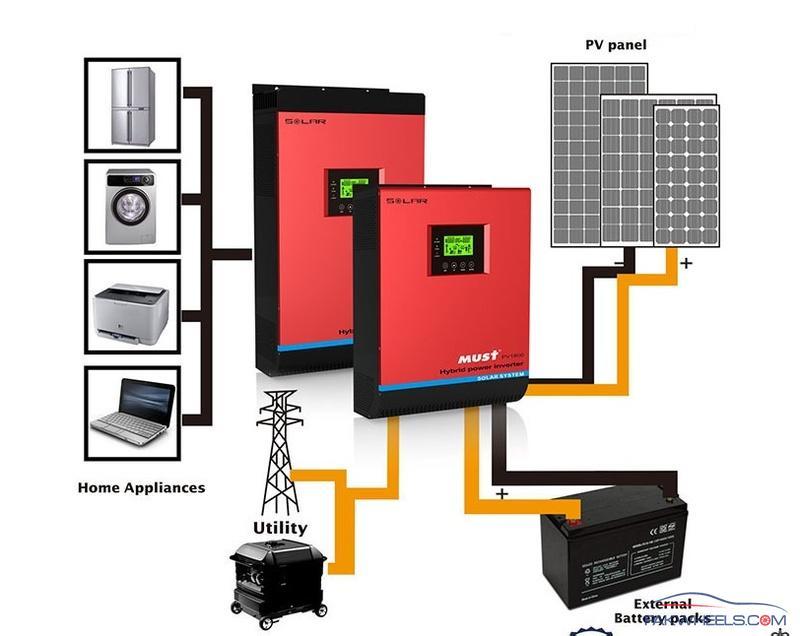
THEN THOSE WHO’S ENTIRE MOTIVATION IS TO RUN YOUR AIRCONDITIONERS ON SOLAR SYSTEM
Then there are those who wants to run their Air Conditioners on Solar Panels, either you can increase your battery bank or you can consider your utility line as your battery bank. That is a very nice idea, why not dump your energy from your solar panels into one or all three phases of your utility lines through any of your home socket with no extra wiring needed. If you are withdrawing 35 amperes from WAPDA and generating 12 amperes internally then that sums into drawing 23 amperes from WAPDA. What if you are generating more then what you are drawing then why not sell your extra electricity to WAPDA, here is the link to application form requesting the installation of smart meters. That is like running your electric meter backwards during the day while it runs forward during the night and can sum up into a very good zero, which means no utility bills or least keeping yourself in a limit where per watt of electricity bought from WAPDA remains cheap. These sorts of charge controllers are known as on-grid charge controller, they exactly measure and matches the electrical waveform to that of your utility line. Its suppose to turn off during the electrical outrage (load shedding) so that you don’t kill someone working on the utility line during maintenance, hey no electrical power during the outrage, what is your hybrid solar charge controller for, it will power your emergency line or all the light loads even during the power outrage such as fans, TV’s, yes, you have heard it right, that you can install two systems simultaneously, the one on-grid to power your heavy loads and one hybrid to power your emergency line such as it becomes your normal UPS being supplement by solar panels.
http://www.nepra.org.pk/Legislation/Draft%20Net%20Metring%20Rules.pdf
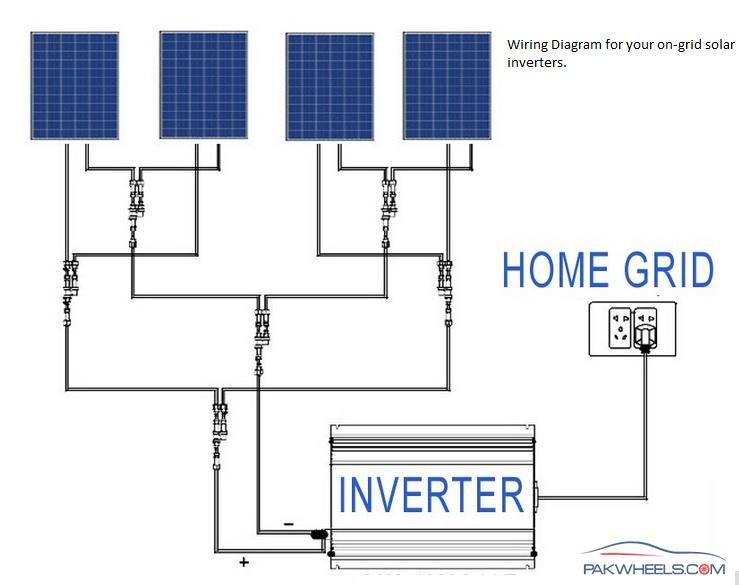
I DO NOT WANT TO INSTALL TOO MANT SOLAR CONTROLLERS:
Designers are more intelligent then you are, they perfectly understand the mentality of human beings, they have designed systems such as the one which has all the thought of functions such as its hybrid, can operate in off-grid mode, can also operate in on-grid mode, it can operate in both the on-grid and off-grid mode simultaneously while charges your battery bank, powers the output line, provides power to all three phases of your utility line, switches off the power to all three phases during electrical outrage as per the requirement of government, keeps on powering your backup/UPS line while charging your batteries. Then designers also understand that few people only want simple PWM charge controllers, few only wants MPPT charge controller, Few only wants hybrid solar PMW charge controllers, Few wants hybrid MPPT charge controllers, Few only wants on-grid solar controllers. Good news is, we have in market for all what you want in a very reasonable price. But only catch is that you should be able to understand and have ability to read the specs and that is what I am here to teach you.

I WANT TO RUN AIR CONDITIONERS BUT DON’T WANT TO SELL ELECTRICITY TO WAPDA:
I have provided link to the forms from where one can apply for smart meters but this is also a very valid concern that I want to run my air conditioners on solar but do not want to get into hassle of installing smart meters. Problem with on-grid solar charge controllers is that once it will produce the extra electricity then it will push that into the utility line outside through your ordinary electric meter. Your ordinary electric meter will see the extra electricity as load thinking that it belonged to him and will bill you for that. In such scenarios, one should buy a solar charge controller with limiter, which senses the amount of load, generates the electricity being consumed internally and makes sure that it does not goes back into national grid. This function can be turned on and off through the LCD panel of the controller, if ever you have installed the smart meter then you can turn off the limiter function and start selling the electricity to WAPDA. Here is the link to on-grid inverter with limiter function which I have ordered online (2000Watt for USD 385).
GAIA Defender with Model Number: GAIA-2000GTIL2-LCD is 2000Watt on-grid MPPT solar inverter with limiter function bought by me for USD 385 inclusive of shipment charges with MPPT range from 45Volts to 90 Volts, which means that I can tie my three solar panels with Vmp=30.1 Volts each in series to make it a 90 Volt input system.
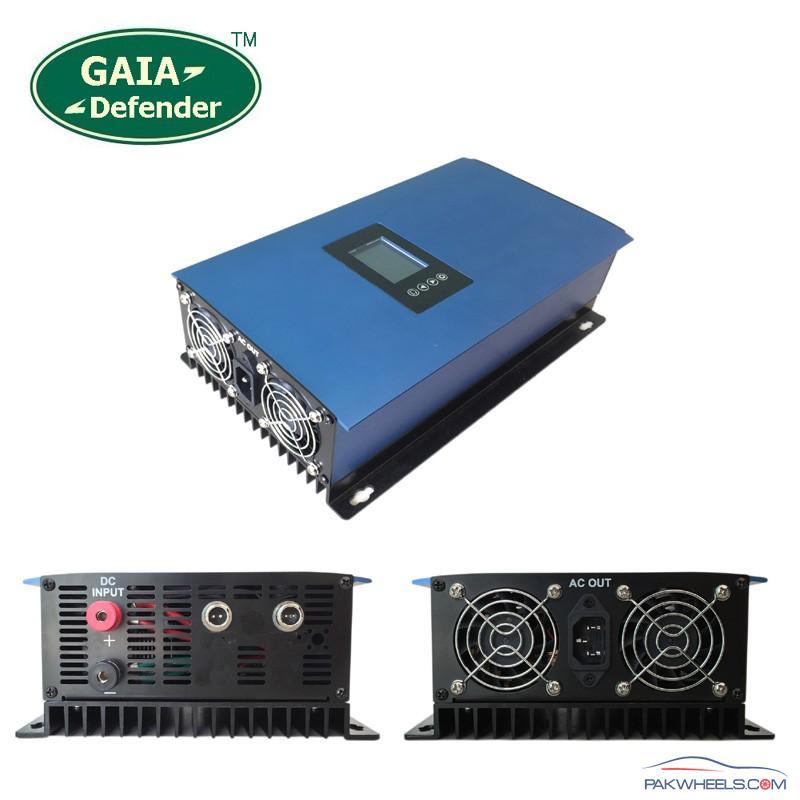
HOW SHOULD I START FROM SMALL SCALE?
You must have noticed that your electricity bills even during winters season remains minimum between Rs. 4000-6000 even though you are very careful on electricity. Reasons for this is an obvious load such as a refrigerator and UPS which remains connected to your output line 24/7. Both these equipment consumes a lot of electricity but good news is that you can easily offset both these loads by being careful in your next purchase. Here is how to get started.
I DON’T HAVE FUNDS TO INVEST SO MUCH INTO SOLAR SYSTEMS:
Maybe you have funds to install a UPS System at Home, do yourself a favor, next time once you retire your old UPS and are looking forward to buy an imported UPS (Inverex inverter 2400VA, 24 Volts battery system) then spend Rs.3000 extra to buy a solar version in same brand. By doing so, you are all set if ever you want to attach solar panels on it. If at later stages, if your pocket allows, then buy 2*150 watt mono type solar panel for around Rs. 6500/- each market price and add it on your controller. You can start with minimum string and expand till 10*150 Watt on same controller in any given frame of time. Guess what, it will power your output line during day and will leave you with a very good backup even to spend most of your night. This inverter comes with a PWM charge controller so it’s important that you buy a 2* 150Watt solar panels and wire then series to make it a Vmp=36Volts system which In return will give you a Vmp Voltage between of 30-32 Volts as Vmp Voltage fluctuates with change in temperature of Solar Panels.
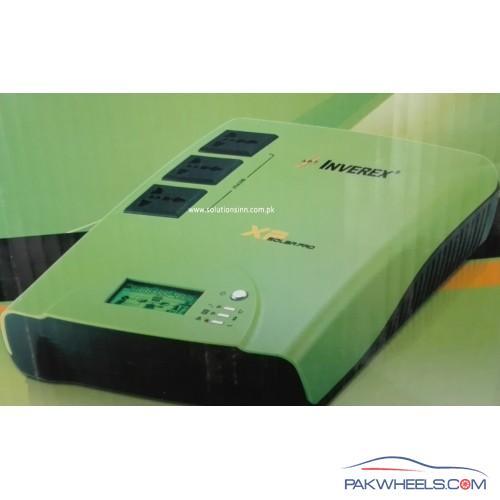
I DON’T WANT TO DISPOSE MY ORIGINAL IMPORTED UPS:
Two different systems, one solar charge controller and UPS can be integrated on a same battery bank, A Timer relay can be installed which can turn off the input from your utility line during day whereas let your solar charge controller charge your battery bank during day whereas during night your imported UPS can take care of things. UPS will still be active on battery bank and will power the output line as normal during day except for the fact, all your energy will be coming from solar controller.
solar charge controller developed by Victron Energy is a very good option available on Aliexpress for USD 85. The company also has other models.
Tracer 4210 EPsolar 40A MPPT is another good option available on aliexpress.com for within the range of USD 125 to USD 145.
THC15A 220VAC Time relay is easily available on aliexpress.com for around USD 8-12. This timer relay can control your input timings of your UPS.
Two different systems, one solar charge controller and UPS can be integrated on a same battery bank, A Timer relay can be installed which can turn off the input from your utility line during day whereas let your solar charge controller charge your battery bank during day whereas during night your imported UPS can take care of things. UPS will still be active on battery bank and will power the output line as normal during day except for the fact, all your energy will be coming from solar controller.
MYTH I WOULD NEED A DRY BATTERY BANK FOR MY SOLAR PANELS:
Kindly consult my earlier thread https://www.pakwheels.com/forums/mechanical-electrical/153379-maintaining-ups-car-batteries as your original lead acid battery bank will work perfectly well with the solar system or for matter of fact with your original UPS provided you are using a good quality electrolyte right from start and your charge controller is properly tuned. All the solar charge controllers have a user interface to properly adjust the charging rate in accordance with your battery bank, high cut off voltages, low cut off voltages, Low Voltage at which your hybrid Solar UPS should switch over to WAPDA from panels etc and many other functions which can be adjusted.
Vmp Voltage of solar panels are very important. A 24 Volts battery bank needs a Voltage of 30-32 Vmp to properly charge a 24 Volts battery bank. If Vmp Voltage of your solar panels is not within the range then that can end up ruining your batteries very quickly may it be Dry batteries. Problem with Solar panels are that a Panel rated at Vmp=30.1 Volts will give you a Vmp Voltage which may vary from 25 Volts to 29 Volts at maximum. The End result is that you will very quickly kill your battery bank. In order to understand the issue, one needs to understand the sorts of controllers available in market. They are mainly PWM solar charge controllers and MPPT (Maximum Power Point Tracking solar charge Controllers). If you have bought the PWM charge controllers first then you will have to buy panels whose Vmp Voltage suits the controller. In-order to connect 24 Volts battery bank whose Vmp voltage should be within 30-32 Volts then you will have to buy two 150Watt panels with rated Vmp voltage of 18 Volts and wire two of them in series such that rated Vmp voltage of both the panels connected in series becomes 36 Volts. In reality, Vmp Voltage varies with change in temperature so you may end up getting something within the range of 30-32 Volts.
Maximum Power Point Tracking Controllers: This will solve your issue as it allows you to wire 3-10 solar panels in series depending upon the specification of controller to make it either a 60Volts system, or 90Volts system or 120 Volts input system etc. MPPT charge controllers are 10-40% more efficient than ordinary PWM charge controllers where panels have to match themselves with the specs of controller and in MPPT, controller matches its self with the specs of panels. MPPT charge controller will step down this Voltage from 90 Volts DC to 30-32 Volts DC as required on battery terminals to properly charge the batteries. System will come to life earliest in morning once combined voltage of all the panels connected in series exceeds 30 Volts Vmp and will stay online late till evening and will work under the cloudy day. Allows you to adjust the variables and will keep your batteries in tip top condition. It’s a way to go and that’s why I am recommending MPPT charge controllers. Further, once panels are wired in series then it reduces your wiring cost, less losses in terms of resistance, result is a substantial difference in total energy yield and cost saving in terms of wiring. Controller itself will be expensive as compared to pwm charge controller but it’s worth the overall investment and end result in terms of cost will be same.
I DON’T HAVE FUNDS TO OFFSET MY REFRIGERATOR BILLS:
I fear that I am going to ruin my battery backup if I put refrigerator on UPS line or solar hybrid controller line. Answer to this is very simple, never install your heavy equipment on emergency line. Below is the picture of 600 Watt on-grid solar charge controller available for USD 79.88 on aliexpress.com
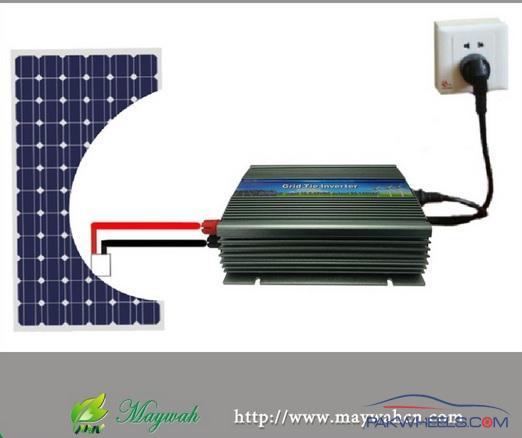
Market is full of cheap and small on-grid solar charge controllers which can easily off-set your electricity bills. You can easily install 2*250 watt solar panels for around Rs. 20,000 on it and that will be enough to reduce your electric bills due to refrigerator. Guess what, if you are able to offset your refrigerator bill only for 12 hours that will drastically reduce your electricity bills.
Chines on-grid inverter model no: WV600W is a 600Watt on-grid solar inverter available for USD 79.88 inclusive of shipment charges and can accept dc input between 45-60Volts which means that you can connect two solar panels of 250 Watt in series to make it a 60 Volts system. Very ideal for someone with very limited budget.
HOW DO I SCALE UP THE SYSTEM?
I have thoroughly investigated the market, if price of 500Watt solar on grid controller is USD 80 dollars then price of two 500 watt solar controllers will be USD 80 +USD 80 or one 1000Watt solar on grid controller will be USD 160 minimum. Further, if you intend to install 2000 Watt solar on-grid controller in one box then its price will be USD 350 minimum so you can easily see that their prices goes as per their Wattage is concerned so it’s a perfectly good idea to start installing from single units of 1000Watt and scaling up later. Shipment price of 5000Watt on gird solar controller in one box will be far more then what one can buy in small pieces provided you can dedicate one wall in your house solely for your controllers. If your family does not like your beautifying that one wall and you have more funds then you can pay extra to buy one controller to accommodate all your panels. Maybe 5KVA model or 10KVA model. Even on 5KVA model, you can start installation from minimum one panel of 1*250 Watt and scale up later.
[TABLE="width: 376"]
<tbody>[TR]
[TD][/TD]
[/TR]
</tbody>[/TABLE]
INFINIXSOLAR 2KW/3KW/5KW/10KW on grid inverter with Energy Storage from Voltronic Power can operate in off-grid and on-grid modes simultaneously. 3KW model cost around Rs. 100,000/-, accepts maximum PV input Power of 4500 watt, is rated at 3000Watts with very good MPPT range of 250VDC to 450VDC. This is what you should buy if one can afford.
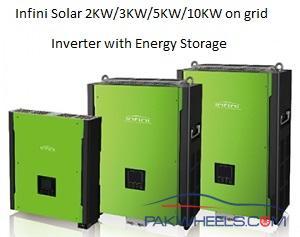
I HAVE FUNDS AND WANTS TO BUY A DECENT OFF-GRID SOLAR HYBRID CONTROLLER
Off-grid controller is essentially an Uninterrupted Power Supply with additional feature of charging your batteries from sun light during day and during night it acts like a normal UPS. It’s a way to go and a perfect replacement for your UPS. I would recommend solar hybrid MPPT charge controller.
Axpert VM-3000-24 Plus is an Off-grid Inverter with 1500Watt solar charge controller: The product has been manufactured by Voltronic Power Taiwan and being sold in Pakistan under the name of Inverex. Inverter has 1500Watt MPPT charge controller, accepts maximum Voc input of 145Volts and is being sold here for Rs. 40,000/- worth the investment. I have already bought and installed one of these.
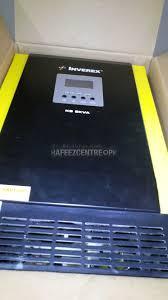
SOLAR PANELS ON YOUR VEHICLES ROOF TOP:
It won’t be a viable option to run your vehicle 100% on solar but one thing which many of us can easily do is to keep your car batteries topped up using solar panels. We know as car batteries dies prematurely because of remaining in discharged state. Now most of us spend heavily on car beautification but we never thought of beautifying it with a 50Watt or for matter of fact with 150Watt flexible solar panel.
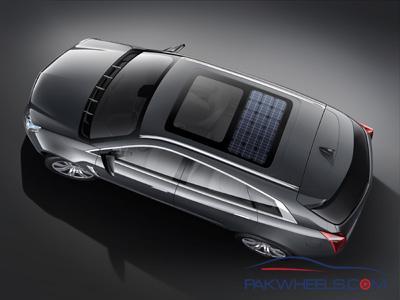
A charge controller such as this is available for USD 5 will easily integrate with 50Watt/150Watt flexible solar panel which will easily stick on your roof top. The Above Panel has a Vmp Voltage of 18 Volts which may fluctuates between 14Volts to 16Volts enough to keep your car batteries topped up in events once you park your cars outside your offices and homes.
CONCLUSION
After having bought and installed on-grid as well as off-grid systems at home with 4000watt solar panels. My total cost has not exceeded 350,000 rupees. We are energy starved nation, experience minimum power outrage of 4-5 hours daily and in order to avoid blackouts, we have installed UPS systems which consumes far more power then what It gives you back and end results are extensive electricity bills which can easily be avoided by installing solar hybrid ups. Since the day, I have installed these along with four Pheonix UGS 215 batteries, I never felt the need to take anything from WAPDA as far as my UPS line is concerned which is only being supported by 9 solar panels.
There is a way to look into things which no one does, if you can invest into solar radiation sensors, measure the solar radiations falling on solar panels then one can easily calculate as how much of the electricity we should be generating by doing math’s and what is an actual figure which you are getting.
If you are not getting as what you are supposed to harvest then you need to look into things using your AMP-METER as where your energy is being wasted. By going back and forth, you will learn a lot and will be able to correct your installation and will clearly see the mistakes which ordinary people are make.
Always read the specs of your MPPT charge controller as how many panels does it allows you to connect in series, the one which will allow you to connect more panels in series will be better in terms of avoiding losses and will be slightly more expensive.
I have tried to keep things as simple as possible so that common person can understand.
Thank you.
